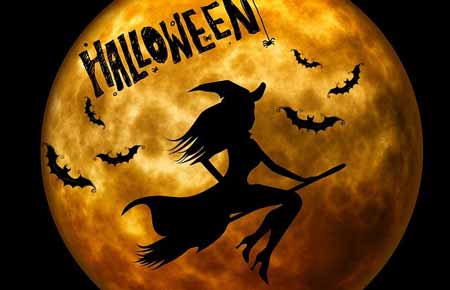October is already coming to an end. Pumpkin spice lattes will be replaced with gingerbread lattes, Jack-O-Lanterns with Christmas trees and wreaths. But before we get too ahead of ourselves, let’s not forget about Halloween, the true mark of the fall season commencing, and one of its most notorious figures: the witch. Witches around the world have entranced for centuries – from the U.S. to Japan…
Witches Around The World: Are You Ready For The Witching Hour?
While we certainly enjoy the spooky holiday, not many are aware of its true origins. In the past, Halloween celebrations were rather limited in colonial New England, due to a strict Protestant culture. But in the Southern colonies, harvest festivals were celebrated frequently.
During these celebrations colonists would harvest crops, slaughter livestock, and carve turnips or parsnips to ward off demons.
Naturally Halloween around the world is celebrated differently (and at times not at all), but some ideas and themes remain similar. Demons and spirits for example are often based in historical tradition.
Speaking of demons, perhaps none is as widespread as the witch. These figures have played central roles in many cultures around the world – both honored and persecuted for their supposed magical powers.
In the United States, nowhere has as complicated relationship with the magical beings as Salem Massachusetts.
Where does the word “witch” come from?
The English noun “witch” comes from the Old English word wicca (masculine); wicce (feminine); and wiccian (verb) probably a shortening of to bewitch.
Witches Around The World: The Witches of Salem
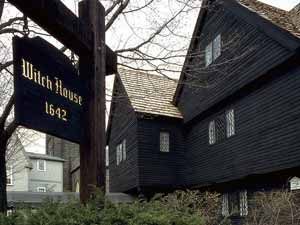
On Halloween in New England, many flock to Salem in full costume. The town puts on a festive celebration with events including a parade, a haunted street fair, movies, costume balls, ghost tours, haunted houses, live music, and scary theatrical presentations.
However, the area wasn’t always known for celebrating the paranormal.
In the year between 1692 and 1693 more than 200 people were accused of being witches during the infamous Salem Witch Trials. The trials comprised a string of charges against villagers practicing the “devil’s magic”, ie witchcraft, which began after a group of young girls in the village began experiencing “fits” and blamed them on being possessed.
Hysteria and paranoia spread throughout Salem Village, and the trials ended only after 200 men and women were accused, and 20 locals were executed – one of whom was Bridget Bishop.
Witches Around The World: A Case of Mistaken Identity
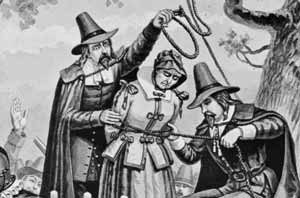
One of the main bases of her trial stemmed from an accusation by Revered John Hale. His testimony, however, was meant to be directed to a Sarah Bishop, also accused of witchcraft.
Lack of proper documentation regarding one charge in particular has generated much confusion. In a statement given by Hale he “refers to the accused as “Goodwife Bishop… wife of Edward Bishop Jun’r.” (Brooks, Hist. of Mass.)
As it happens both Sarah Bishop and Bridget Bishop were married to men named Edward Bishop.
Sadly, back in 1692 information was spread mostly via word of mouth and there were few copies of proceedings and public open-source information. As such, it was hard to dispute false or misleading claims.
These falsities and the lack of proof or direction for juries (along with spectral evidence) eventually lead to many other men and women alongside Bishop being accused. Even today many historians continue to misidentify Hale’s testimony against Sarah Bishop to be for Bridget Bishop.
On a lighter note, Salem is the place to be if you happen to be in the New England area come Halloween weekend. If you are paranoid of “pulling a Bishop” while you visit, just make sure you make arrangements to be placed in the right hands come court time (and to make sure you cover all your bases, this includes, of course, having solid translation services providers)!
5 Examples of Magic and Witches Around the World
While we at Language Connections call Massachusetts home, the presence of witches and magic is not just central to our history. For centuries people were singled out in communities due to their seeming abilities to use magical powers.
Not all of these individuals are considered to be “witches” however, they do tend to utilize seemingly magical powers to either help or harm. Examples of such individuals can be found in areas ranging from Europe to Asia and South America.
We’ve described five instances of witches around the world below, some where the magical powers are revered, others where they are persecuted.
South Africa: The Sangoma
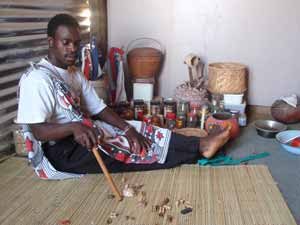
A Sangoma throwing bones
While not considered witches themselves, Sangomas are traditional healers of Africa who utilize what appear to be paranormal powers for a variety of work.
For the Zulu, Nguni, Sotho-Tswana, and Tsonga of South Africa, these healers are seen as integral members of the community.
These healers are diviners who can communicate with ancestors. It is through this communication that remedies for sick individuals are prescribed. They often use practices such as bone throwing to divine information about ailments, and are highly respected in their communities.
North America: Navajo Skin-Walker
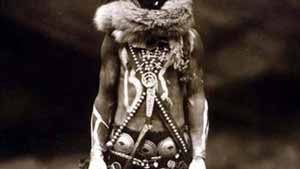
A potential representation of a skin walker in human form
A particularly haunting figure, the skin-walker (also known as the yee naaldlooshii) is depicted as a witch that harms others by disguising itself as an animal.
Not many outside of the Navajo understand the myths surrounding these witches, as they are kept as protected elements of the native culture (some western pop culture has adapted the figure well outside of tradition).
What we do know is: the figure is able to possess animals (and sometimes humans) by meeting eyes, and it is quite terrifying.
Chile: Kalku and Machi
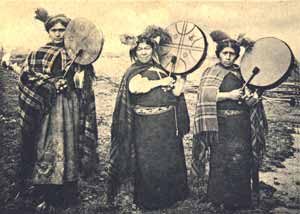
Machi women
The Mapuche people of Chile believe that the Kalku is an evil sorceress who exists in opposition to Mapuche spiritual leaders and medicine women known as the Machi.
Both are women, and both are in some regard related to witches. Kalku is responsible for using black magic and is seen as a mystical figure, while Machi is a religious leader/shaman and ahealer of ailments.
Philippines: Mangkukulam
Kulam is a type of Filipino witchcraft. It is practiced by witches or sorceresses called mangkukulam that perform black magic.
The Mangkukulam utilizes methods similar to voodoo, brews potions, and casts spells and incantations intended to bring harm (or good depending) to others.
The Mangkukulam stems from ancient Tagalog beliefs, where he represented one of four main followers to Sitan the guardian of Kasamaan – hell.
Japan: Fox Witches
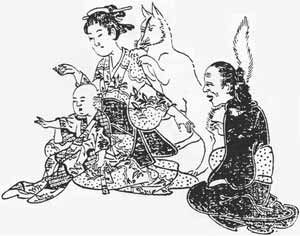
Artistic representation of Kitsunetsuki
Foxes play an important role in Japanese folklore, as well as its stories of witchcraft. Fox witches are generally separated into two different types:
The Kitsune-Mochi are individuals who bribe foxes with food, and then make a deal with the animal in which its magical powers will be granted in return for food and care.
The magic of these foxes is generally considered to be evil once in the control of humans.
One such instance of evil use, is through possession known as Kitsunetsuki. Here, foxes will possess people (generally women), and inflict various ailments.
These include fits of shouting and running naked, frothing, yelping similar to that of a fox, and extreme hunger for foods traditionally preferred by foxes.
The Tsukimono-Suji on the other hand are families that have control over the magical powers of foxes.
These foxes provide their powers, luck and prosperity (though only if well taken care of) to the families as a whole, and are usually passed down along female generational lines. These families are both respected and shunned for fear of inheriting the foxes magic.
Do you know any other examples of magic and witches around the world? Let us know in the comments!
From all of us at Language Connections, we wish you a Happy Halloween!
Sources for Magic and Witches Around the World:
- http://historyofmassachusetts.org/
- http://historyofmassachusetts.org/bridget-bishop-witch-or-easy-target/
- https://www.smartdestinations.com/blog/halloween-in-salem/
- http://www.history.com/topics/halloween/history-of-halloween
- http://www.history.com/topics/salem-witch-trials
- http://storiesforghosts.com/the-history-of-halloween-america/
- http://www.churchyear.net/allsaints.html
- http://www.bbc.com/news/world-africa-22306869
- https://en.wikipedia.org/wiki/Deities_of_Philippine_mythology
- https://en.wikipedia.org/wiki/Kulam#Mangkukulam
- https://en.wikipedia.org/wiki/Skin-walker
- https://en.wikipedia.org/wiki/Kitsune#Kitsunetsuki
- https://en.wikipedia.org/wiki/Witchcraft#Japan
About Language Connections:
Language Connections is one of the top language service companies in the US. Over the last 30 years, we’ve focused on providing the best business translation services, interpreting services, as well as interpreter training and customized language training programs. In addition to top-tier corporate language training, we offer certified corporate interpreters and professional business translation services in 200+ languages. Our network includes linguists with backgrounds in all major industries. They’re ready to meet your needs, whether they’re for technical translation services, legal translation, government translation services, international development translation services, education translation services, life sciences translation, or something else. Reach out to us today for a free quote on our cost-efficient and timely translation services, interpreters, or other linguistic services.
Language Connections Inc.
2001 Beacon Street, Suite 105,
Boston, MA 02135
Phone: +1-617-731-3510
Email: service@languageconnections.com

